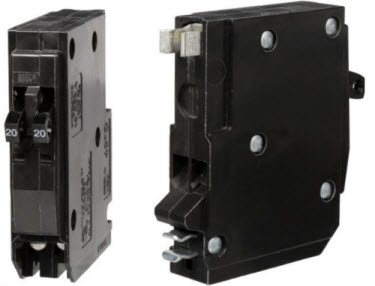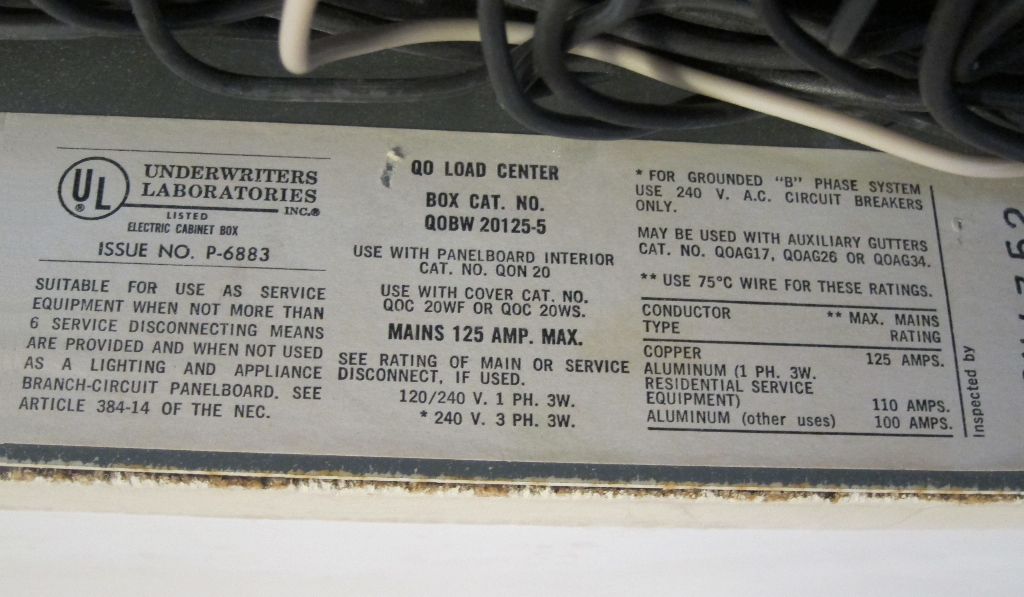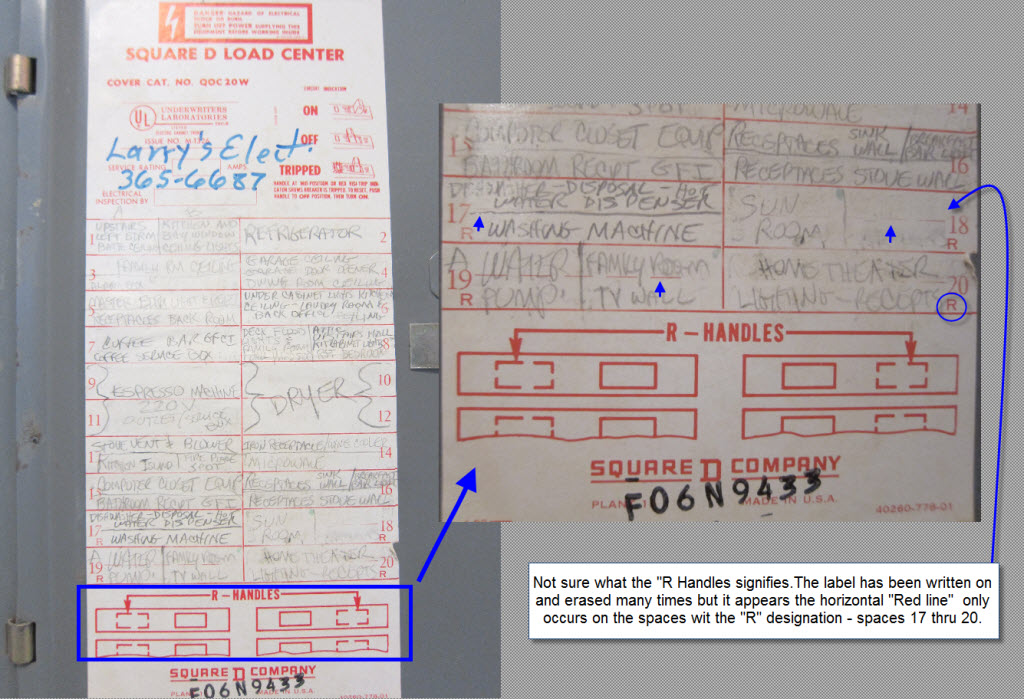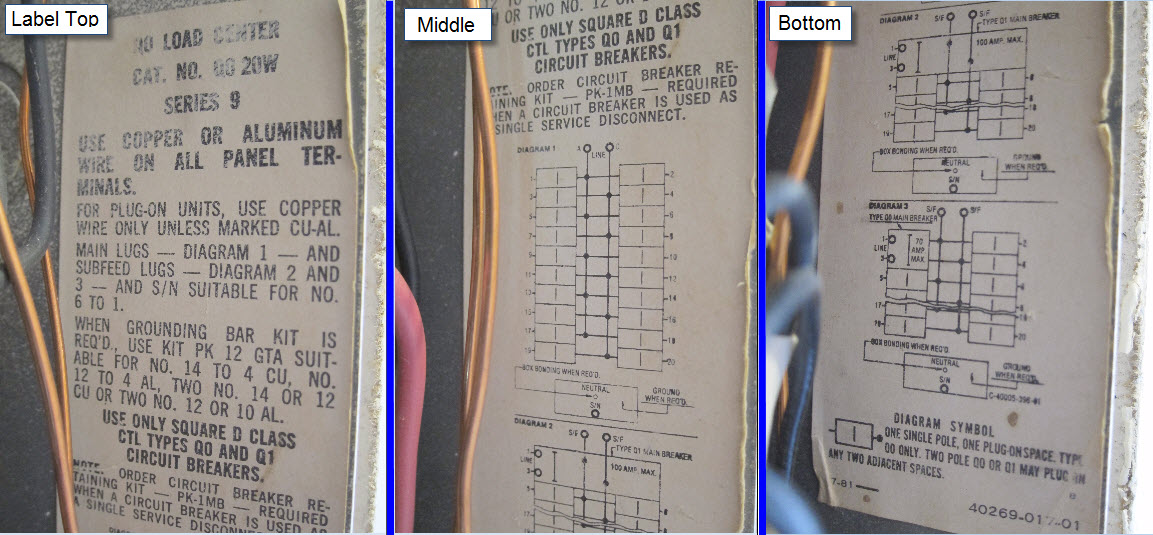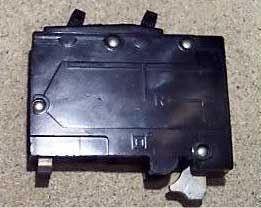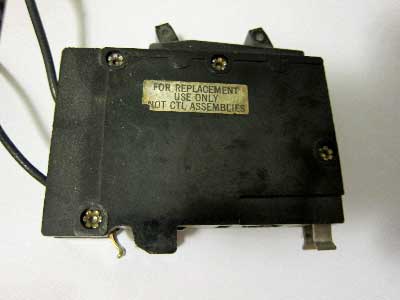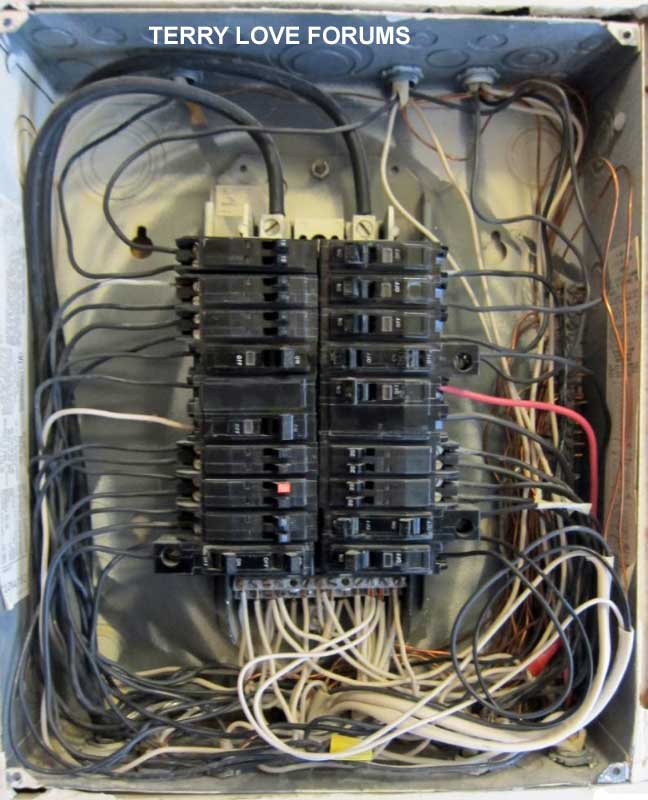Elton Noway
Member
The Main Lug subpanel in the photo is a Square D panel mounted inside our house in the utility room. It is labeled as Catalog# QOBW 20125-5. It is original to the house built in 1983. I found a box full of "used" single circuit breakers on a shelf in the utility room. On investigation of the panel I could see two different styles if tandem breakers along a few remaining singles. If I had to guess, it appears singles have been swapped out for tandems over the last 30 + years as more circuits were needed. The box currently has 20 spaces (all used" for a total of 31 circuits.)
In perusing the web I see 125A main lug panels identified by their number of spaces and circuits. Example: I've found seen 125A panels with 20 slots / 20 circuits and 125A with 20 slots /40 circuits. Obviously the 40 circuit box will accept 20 tandems for 40 circuits whereas the 20 circuit box will only accept singles. Although someone was able to add more circuits to this box over the years I'm hoping to find someone familiar with this box who can identify or determine if the box is actually safe to hold 40 circuits. Granted the previous owner was able to add tandem circuits as needed but who knows if anyone verified it was designed as such. My problem is the box is so old I can't find any information on the panel to see if its designed capacity is being exceeded or if everything is just the way it is. FYI: The exterior "House Main Circuit box" has a 90Amp disconnect that feeds to this main lug panel.
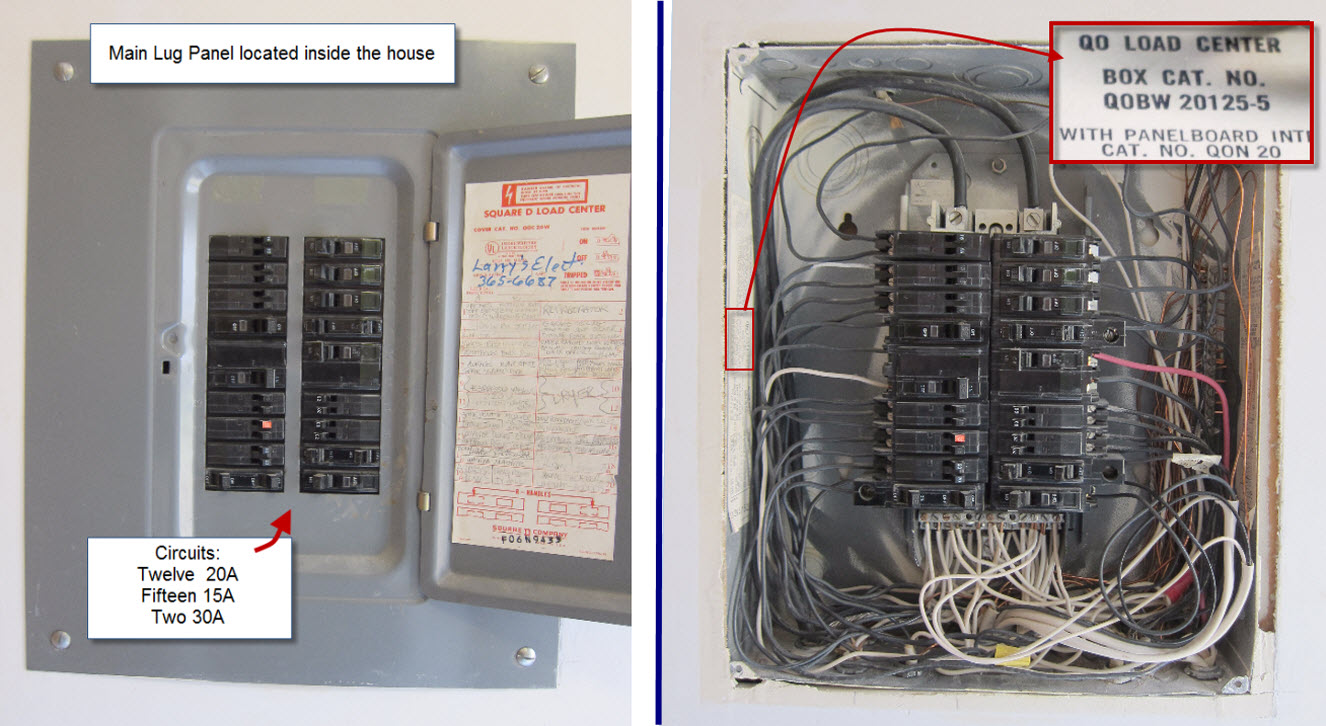
In perusing the web I see 125A main lug panels identified by their number of spaces and circuits. Example: I've found seen 125A panels with 20 slots / 20 circuits and 125A with 20 slots /40 circuits. Obviously the 40 circuit box will accept 20 tandems for 40 circuits whereas the 20 circuit box will only accept singles. Although someone was able to add more circuits to this box over the years I'm hoping to find someone familiar with this box who can identify or determine if the box is actually safe to hold 40 circuits. Granted the previous owner was able to add tandem circuits as needed but who knows if anyone verified it was designed as such. My problem is the box is so old I can't find any information on the panel to see if its designed capacity is being exceeded or if everything is just the way it is. FYI: The exterior "House Main Circuit box" has a 90Amp disconnect that feeds to this main lug panel.


